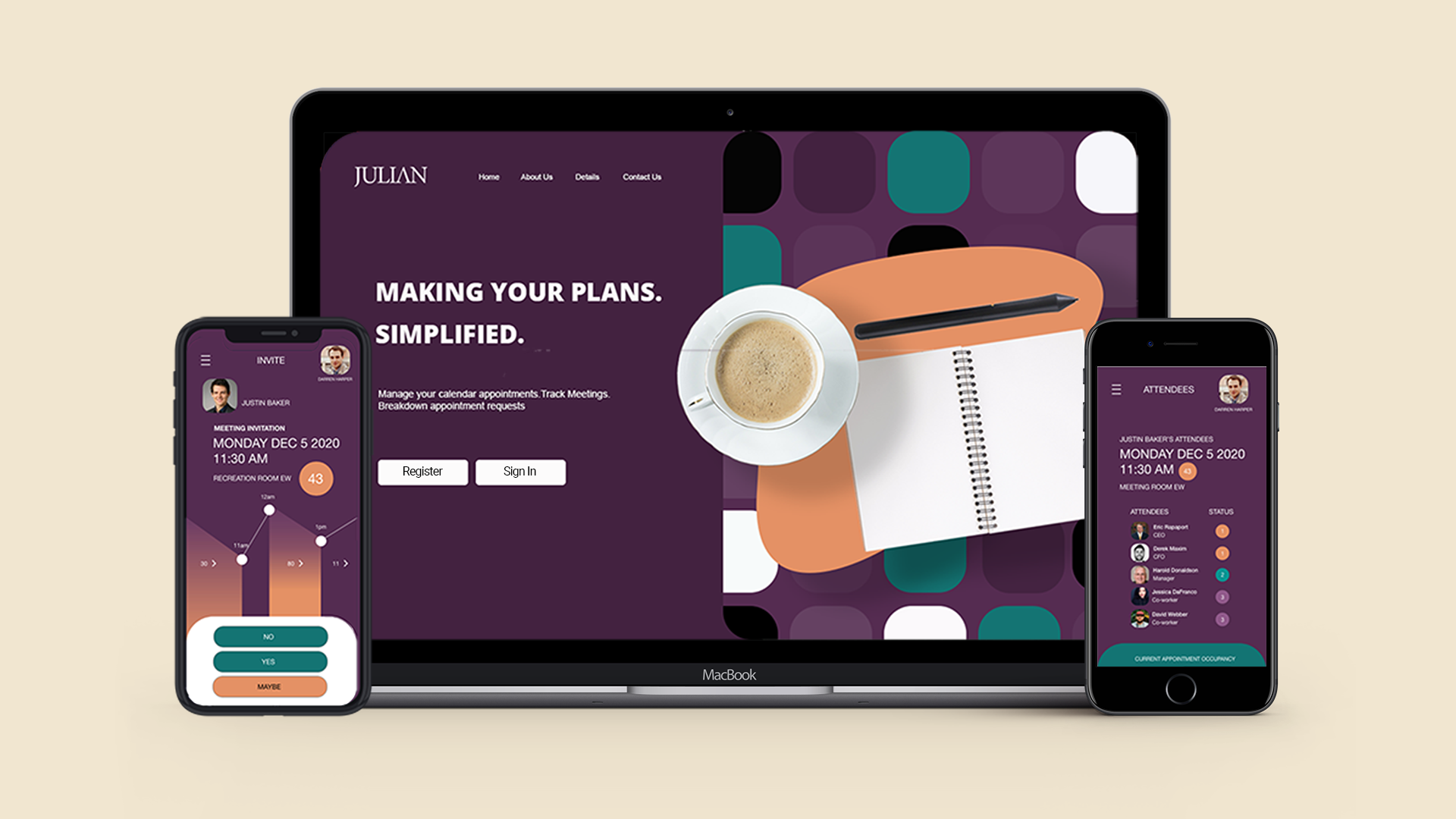
ROLE:
Self
TIME:
One Month
APPLICATION:
Mobile App(Android)
IOS
TOOLS:
Adobe Suite, Figma, Adobe XD
This was my first fully designed project. For the very first time, I had the experience of taking a concept from the research stage, to problem statement and ideation, all the way to the delivery of the final product. The app market is currently flooded with calendar applications being used as native apps or being downloaded from the app/play store. According to the data collected on the App Store’s top 5 applications, there are roughly over 2 million active users. I took on the design project to enhance the capabilities of a calendar so that it meets the needs of business professionals. I wasn’t trying to reinvent active calendar applications. My goal was to try to solve the problem of creating and confirming calendar meetings for the 30-45 business demographic, which I specifically researched and studied. However, while my application can be considered as a niche market for calendar business applications, there is a very large market for the use of a calendar by people outside of business purposes. I used the research, listening, and problem solving skills that I learned from my years working as a customer service representative to understand and emphasize with users and create a product that truly made a difference to people’s lives.
I had to use my research and empathy skills that learned from years as a customer service representative to emphasize with users to create a product that was useful based on my customer research
Challenge: To create a faster and more productive application that can be applied to calendar events
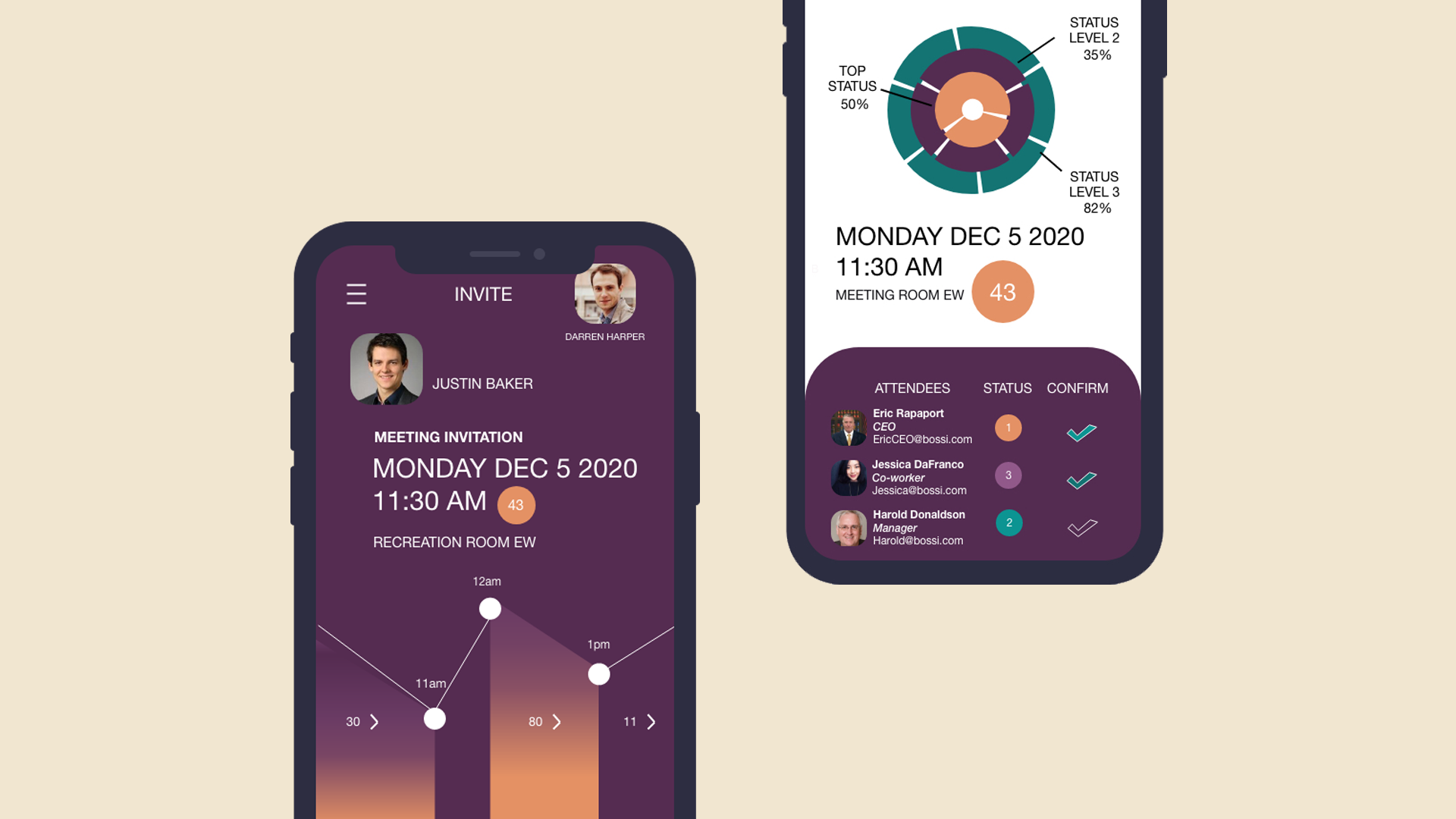
SECTOR:
Business, corporate
CHALLENGE:
Create a faster and more efficient calendar app
MY ROLE:
Research, information architecture, analysis, design, development, and branding of the mobile calendar app
OVERALL OBJECTIVE:
Unite people, one confirmation at a time
![]()
Articles such as "STOP THE MEETING MADNESS" (2)reveal that many executives feel overwhelmed by meetings
Such complaints are supported by researchshowing that meetings have increased in length and frequency over the past 50 years, to the point where executives spend an average of nearly 23 hours a week in them, up from less than 10 hours in the 1960s.
I investigated the question of how often people have group meetings in a day, week, and year. Additionally, I considered how many of these meetings were with other departments. At the beginning of the project, I was, in fact, trying to solve a problem that didn’t really need to be solved - how to add and upload calendar events in the fastest time possible.
It wasn’t until after I’d conducted several user interviews that I realised I’d have to pivot to a completely new problem: the frustrations people experienced in creating calendar appointments. The task was then to design an app to help solve their problem. Initially, I intended to find a faster way to create an application. After conducting the interviews and doing research, I synthesized all the information into two statements.
The first statement describes the users’ main pain point:
Users need an efficent way of communicating and confirming calendar appointments with eachother.
The second statement describes the desired outcome to resolve the users’ pain point:
Users need an efficient way to confirm calendar appointments with each other.
I'm a 32 year old who recently got a job as an account manager at a big marketing firm. My last job was at a smaller marketing company where I was able to get to know everyone’s name. It really felt like a small family. When I got to my current job, I realized I was at a firm 10 times bigger than my last job. There are a lot more people in different departments, and it's taking me longer to get to know everyone. Today, I spoke with my boss, and he wanted me to set up a meeting for everyone to discuss the problem our marketing team and customer service team are facing with my clients. The customer service team works mostly on the road, working in the field. I’m afraid of setting up a meeting where everyone can attend the meeting because there’ll be too many confirmed respondents from both departments at the meeting. I want a way of viewing who the respondents are and finding out if the meeting is important enough to have. I'm new at this job, and I want my boss to know that I’m capable of getting everyone together to discuss this matter.
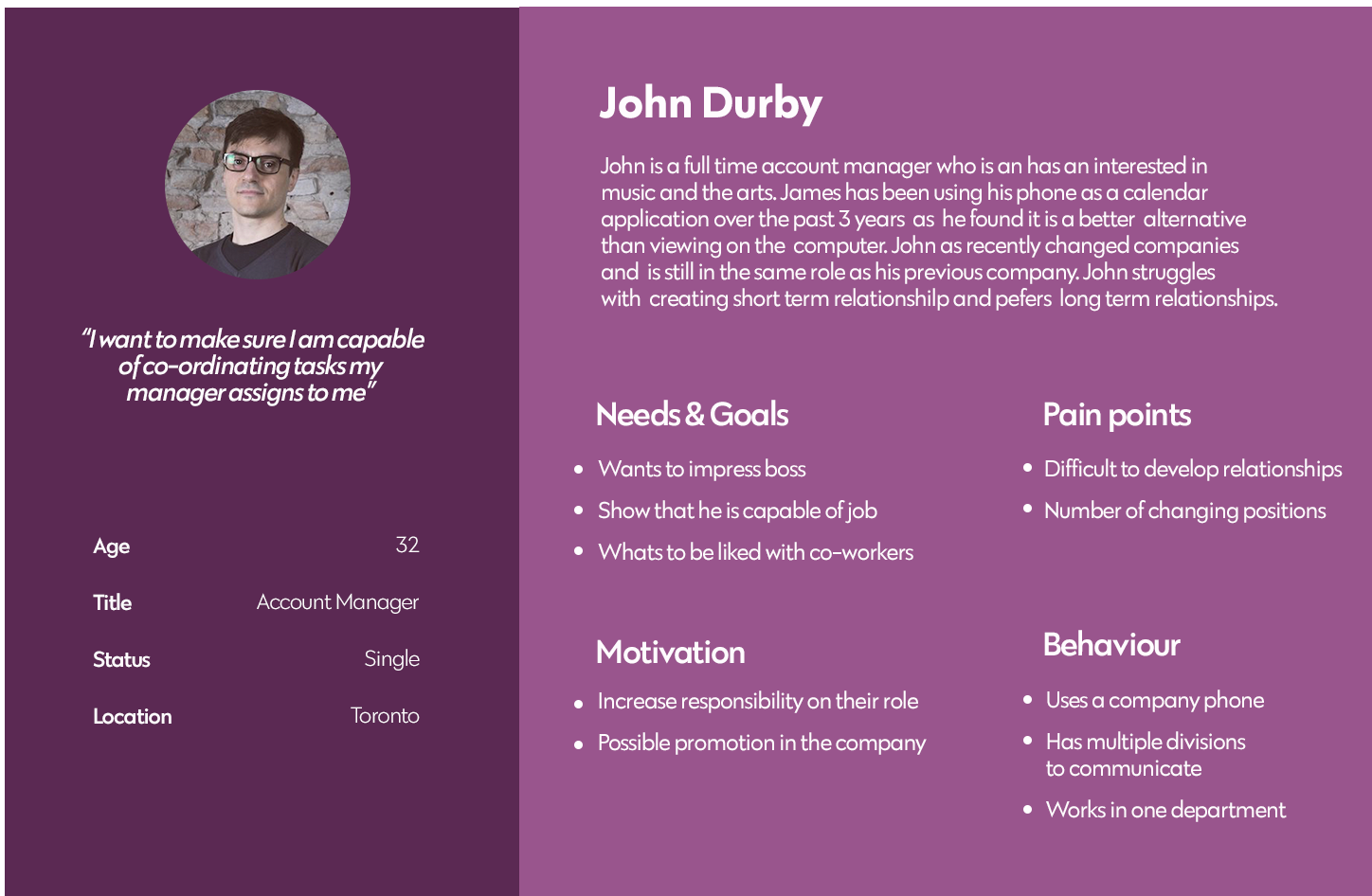
I conducted further interviews with people who frequently use the calendar for appointments and meetings. I used an interview script with each participant. The Empathy Maps I created show the pain points and commonalities of three of the four users. Each of the subjects I interviewed were specifically chosen because they were professionals within the 30-45 age demographic. This age range would likely be the most frequent users of the application. Each interview lasted roughly 30 mins. Through my line of questions, I tried to discover the reason why a person working in a professional field would use a calendar and how I could make their process easier. Over the course of my interviews, a new theme emerged related to group meetings and appointments that users set up with other people. Through the empathy I developed with the participants, I found that users experienced similar frustrations with the process of creating and confirming calendar appointments.
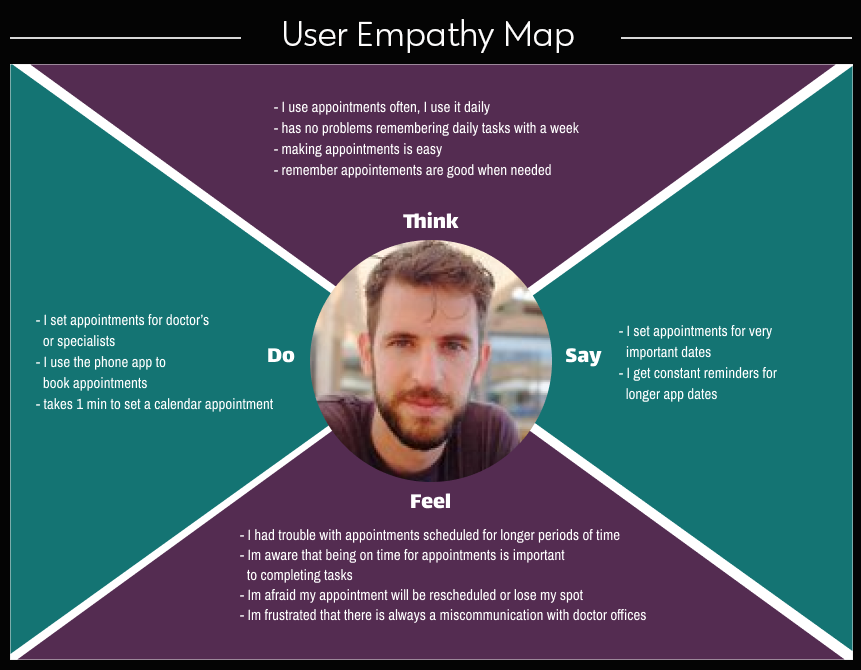
* David, 34 yrs - A regular calendar user

The process of bouncing from email to calendar application when creating a calendar event is cumbersome. My design would analyze and confirm calendar attendees and establish their importance to meetings seamlessly in one app.
OUTCOME:
Users are frustrated with the process of creating/confirming calendar meetings with other users.
- I chose competitive analysis research with the most current calendar application in order to understand what type of design is currently out there for calendars. I wanted to see what work events are based on layout and functionality within most calendar apps.
- I used a heuristic evaluation to review three aspects of the design and how the user interacts with it.
- Five participants took part in the analysis of the 6 most used applications in the Google Play Store.
- Participants had to create a calendar event for six calendar applications.
- Subjects had to fill out a questionnaire at the end of the calendar event, ranking each app from the lowest (1) to the highest (5).
- Results were based on the criteria of Functionality, Visuals and Time.
Challenges:
The subjects felt like the tasks were testing their behaviour with the apps. I distributed the questionnaires to the subjects immediately after each test for each calendar event. Tests that were done at the beginning might have different results compared to tests at the end due to participants having more knowledge of the calendar events.
Outcome:
All of the apps struggled to build a way to create and communicate calendar appointments with other people.
sSummary:
User interviews provided data which offered insight into what was wrong with calendar applications. Competitive analysis was a way to find out what works with event setting.
Plan:
My plan was to use both segments as reasons for creating my design.

OUTCOME:
All apps struggle to build a way to create and communicate calendar appointments with other people.
The next step in this project was to devise a user flow so that our target audience would be able to experience a simple, productive, and efficient way of adding calendar appointments. A six-panel sketch was created by myself to explain the pain points of the journey with a medium-fidelity wireframe.
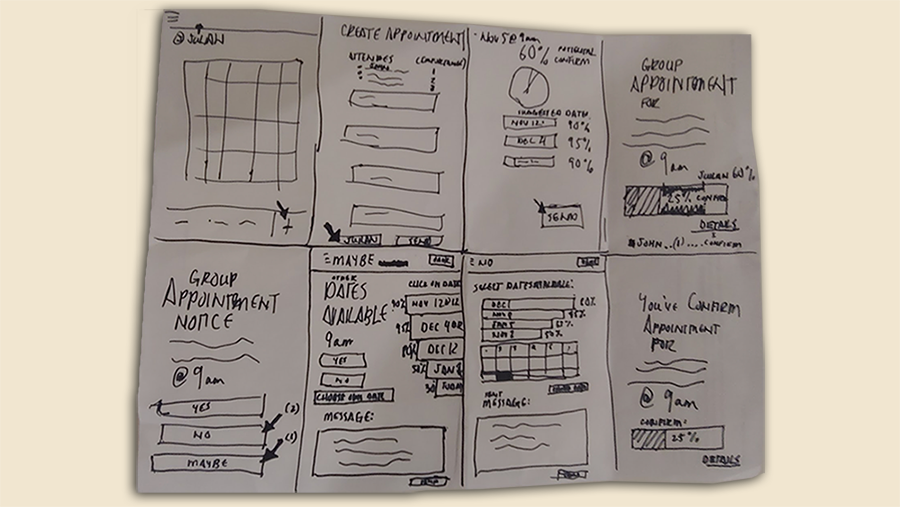
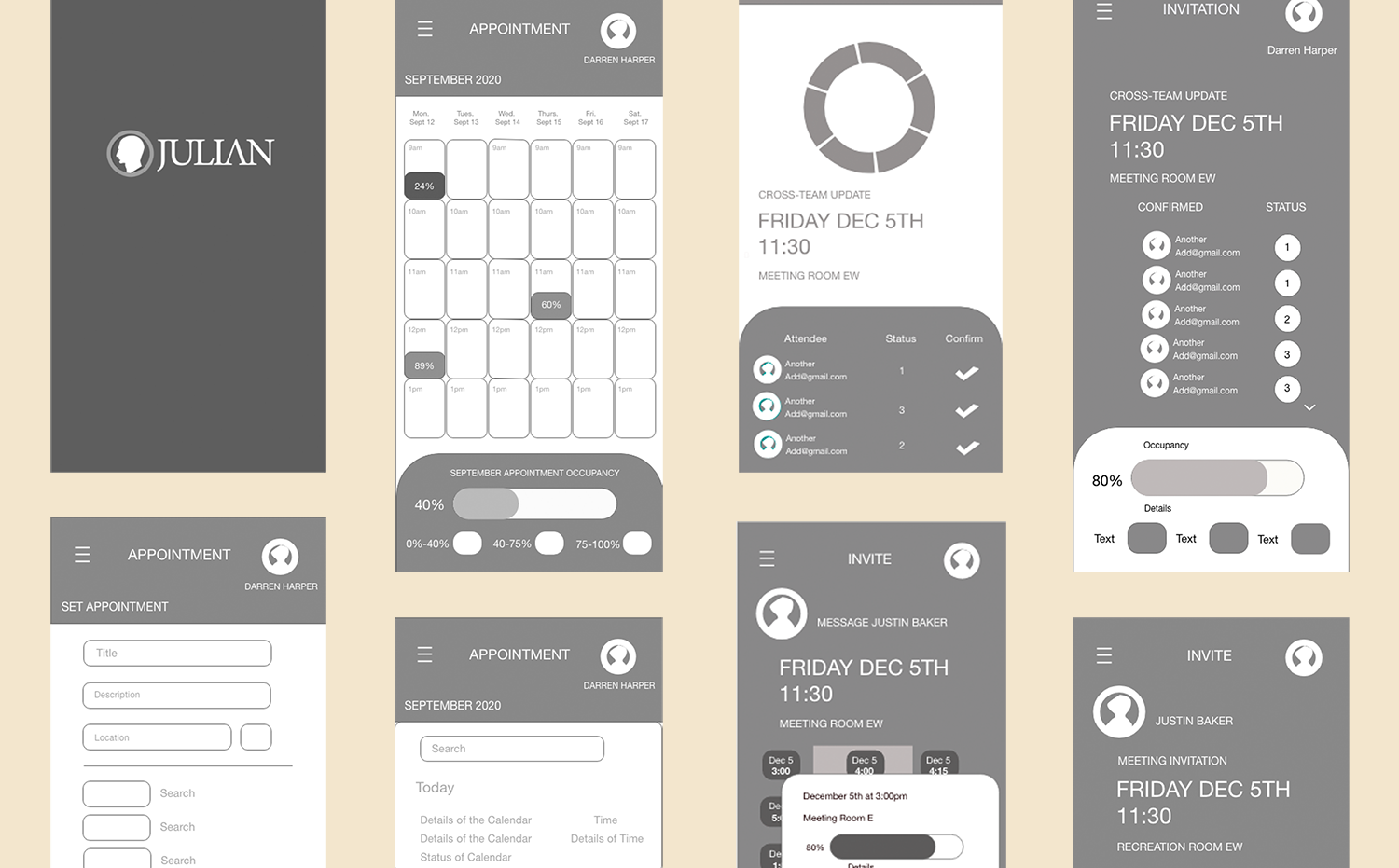
The wireframes can form an Ideation stage of creating, decreasing the steps it requires users to create a calendar event. Creating an event process can be changed by allowing the app to reschedule an appointment. Here’s the user process:
The goal of this project was to create a better user experience for both attendees and recipients in making calendar appointments. Main functions such as adding an event and accepting calendar invitations need to be readily accessible and easy to manage.
REGISTRATION
First, the user must register an email address to access the app. All recent calendar events and contacts from the email account will populate. Based on my research, an email address is only required for users to access the app.
DESIRED OUTCOME:
A quick registration process that can retrieve calendar appointments and contacts
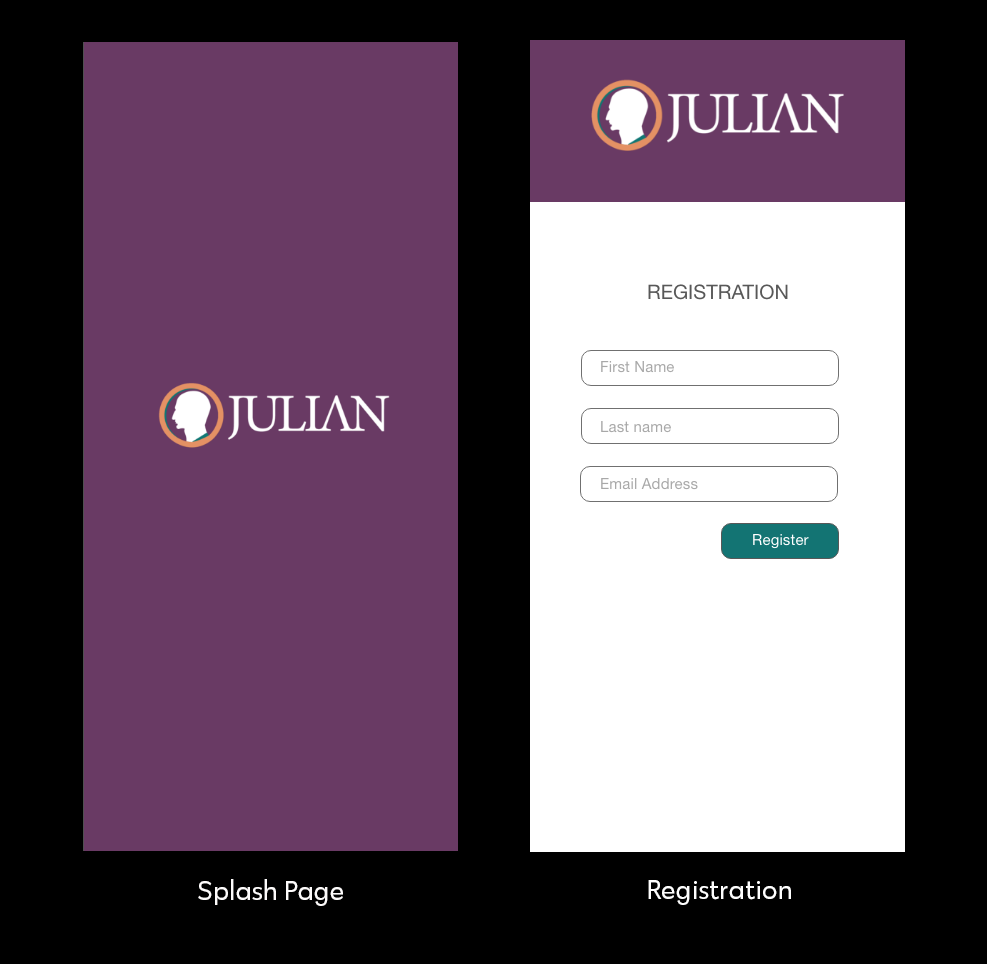
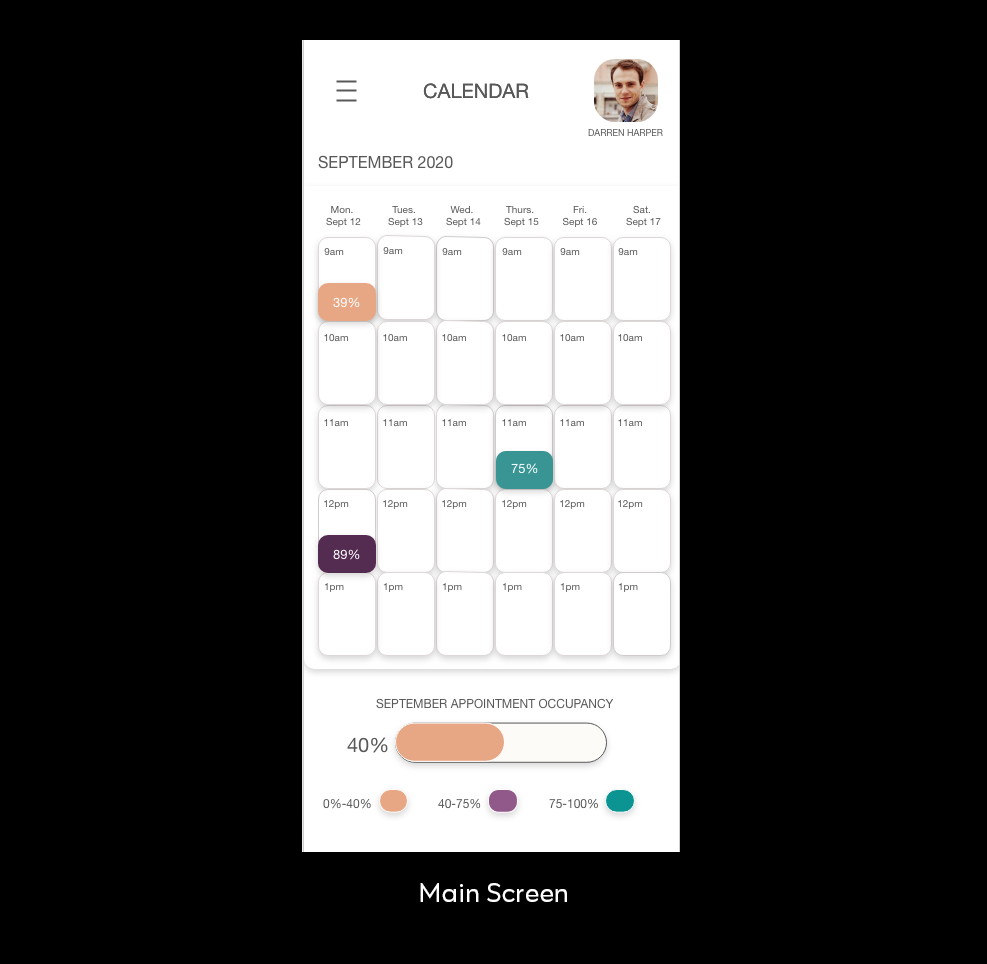
CALENDAR
Next, the registered user can view the date and time of an event through the main calendar. The app allows users to see a percentage of how many attendees have confirmed the event and provides a specified colour based on their availability.
DESIRED OUTCOME:
Users want a calendar that can show more details in each appointment
EVENTS
The user can view the attendees and categorize them based on the level of importance within the event. The design will allow users to track people attending and assign a number from low to high based on there importance for the scheduled event.
OUTCOME:
A breakdown showing a percentage of attendees is a faster way to track the progress of available attendees
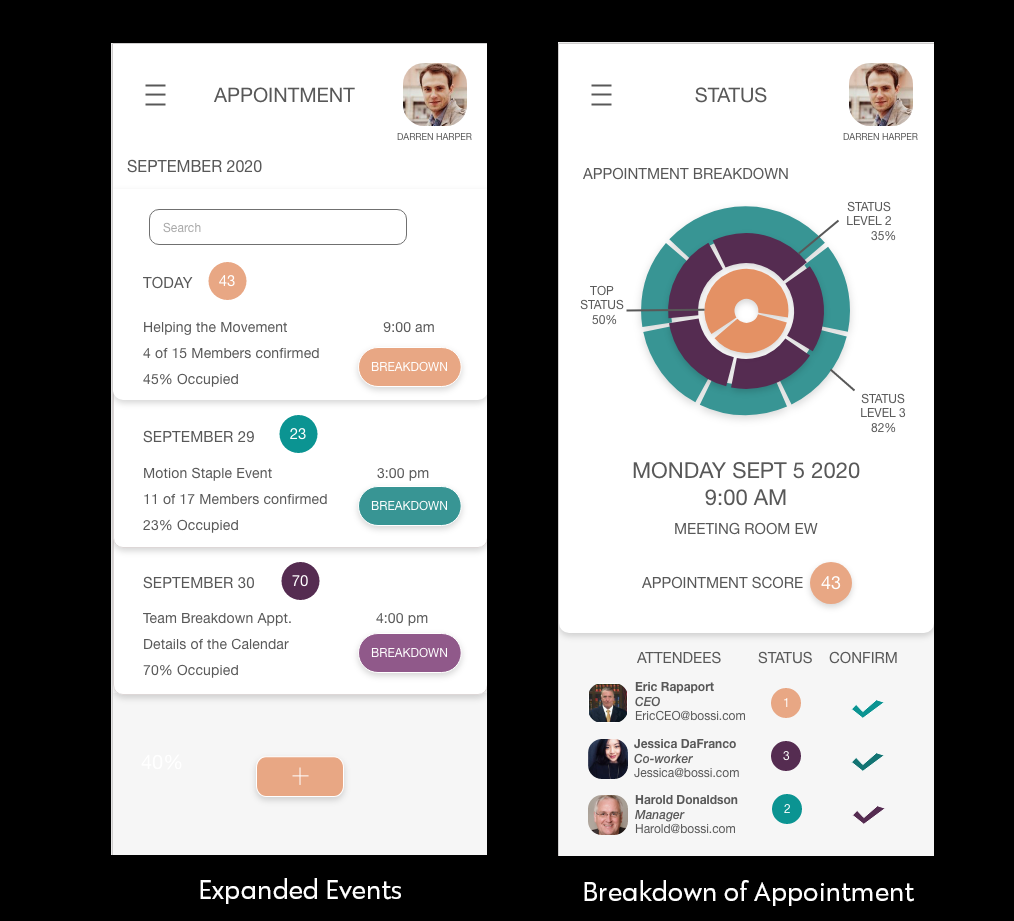
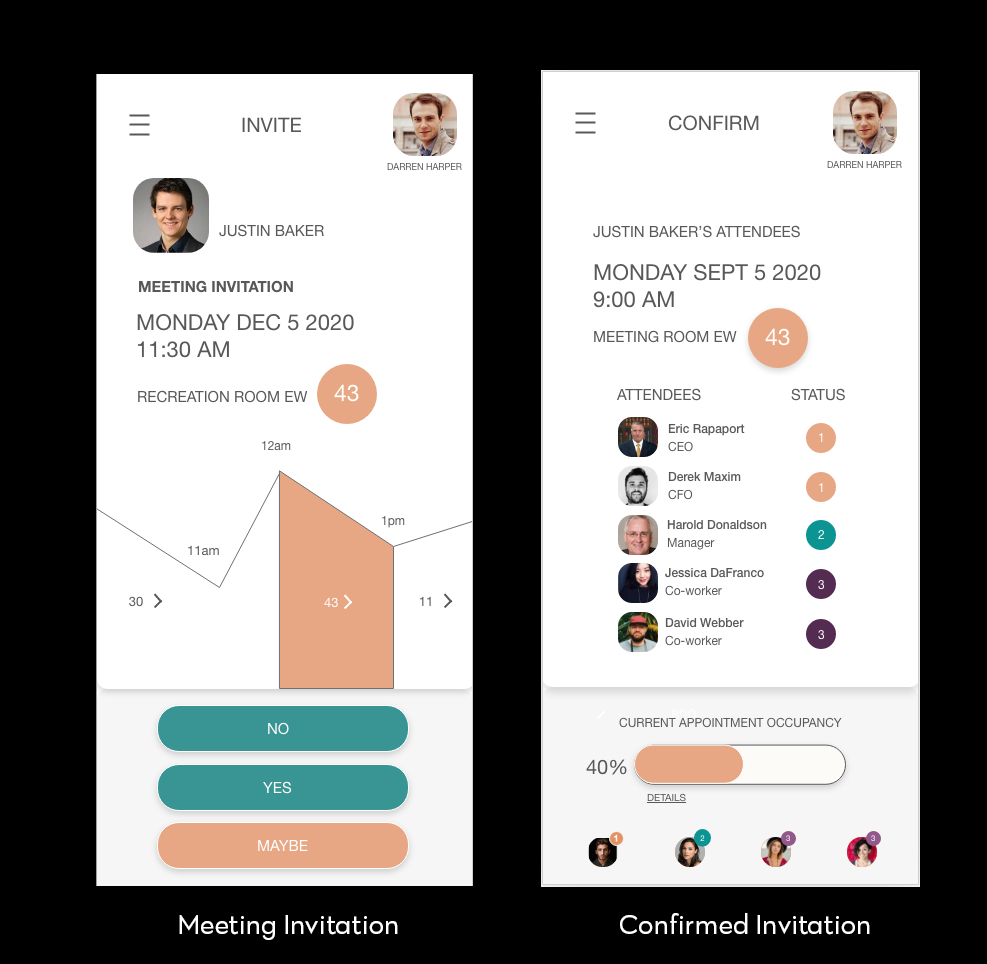
INVITATION
The user can view a breakdown of potential attendees based on data pulled from the database of other app users. The user can access a breakdown of an event before it is confirmed with other attendees to make the experience fast and simple.
OUTCOME:
A user wants to view details for available attendees before sending out an appointment
EVENT ADDING
For users who want to set an event, there are plenty of filters to enhance their experience. The default settings pulled from their email automatically load into forms but can be altered by the user when adding an event.
OUTCOME:
Users want to know how to resolve scheduling conflicts with other attendees when adding an event
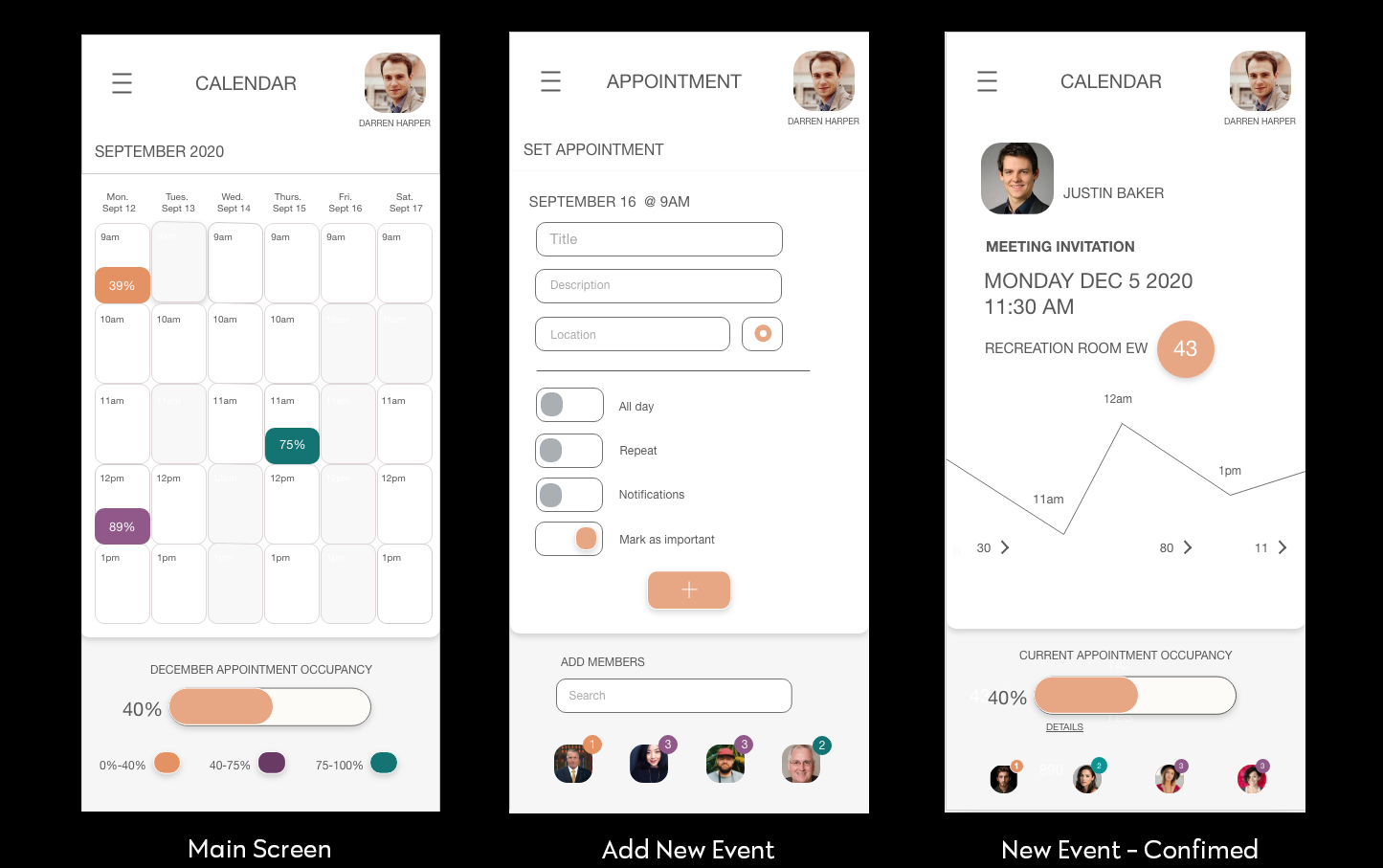
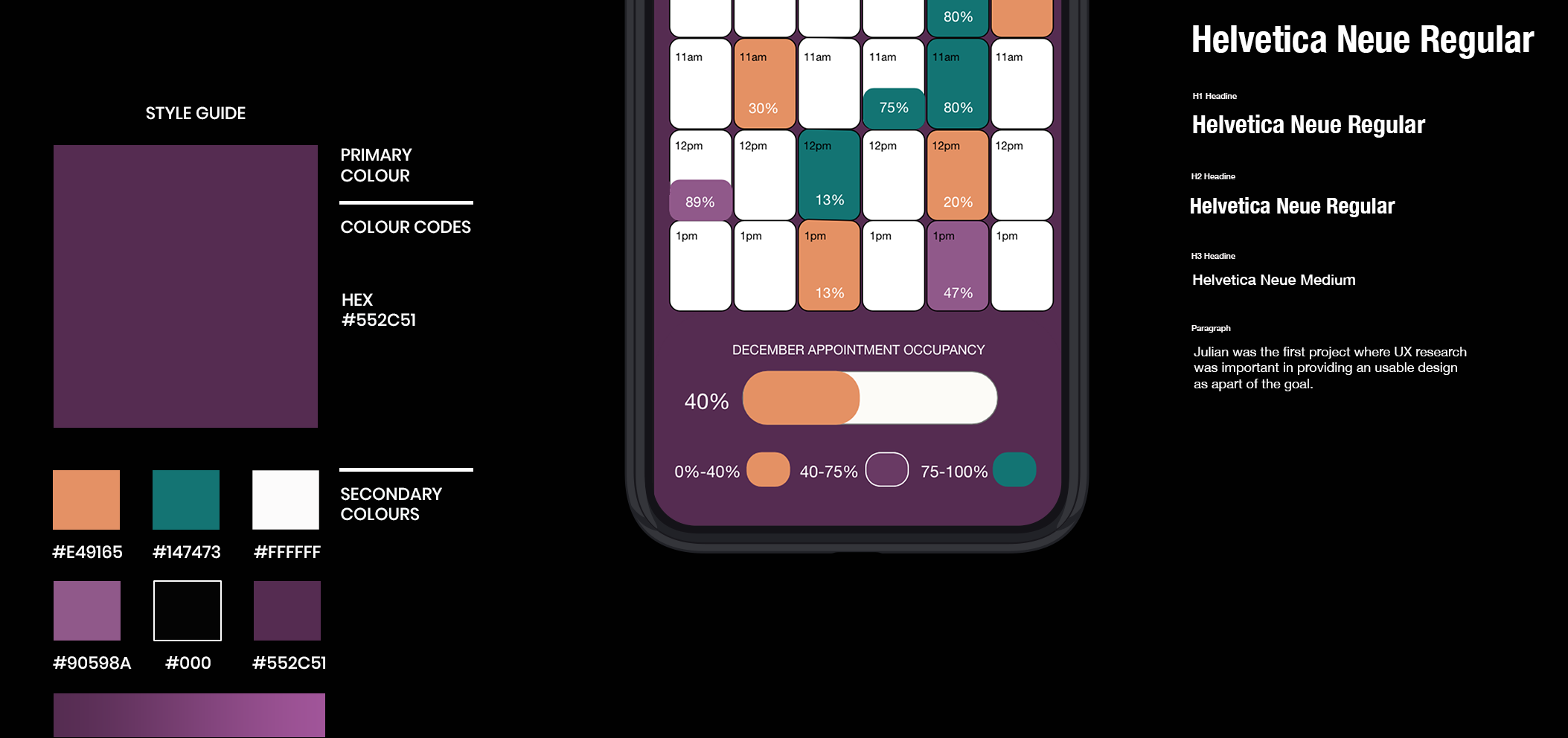
The next step in this project was to create a prototype that our target audience would be able to experience use and analyze.
My project used the problem presented in my users’ interviews as the basis for creating an efficient calendar event schedule. The exact pairing gave me the inspiration of creating the concept of Julian.
REFLECTION:
The entire development of the application took one month. After reviewing user testing results and feedback from my peers, I identified a few next steps in the existing design.
NEXT STEPS:
The development of an interface that can integrate with other email applications such as Gmail, Outlook etc would be important and useful.
A better understanding of the onboarding process will allow users to interact with the interface more effectively.
Further research on the users who are not directly owners using the application would also be valuable. An example of this would be a secretary who schedules meetings for their boss and how the application would reflect information back to their boss.
An aggregate study needs to analyze the importance to each person of those attending meetings. Because people may have different roles and importance in each meeting, this can become very confusing.
My competitive analysis only dealt with adding one calendar event for one person due to the length of the testing I was able to conduct with the participants.
A more discreet way of showing the importance in the meeting is needed. For example, someone rated lower in the meeting is likely to already feel that they should be left out of the meeting, and this decreases the chances that they will attend. Therefore, the app would serve a function that was antithetical to my mission.
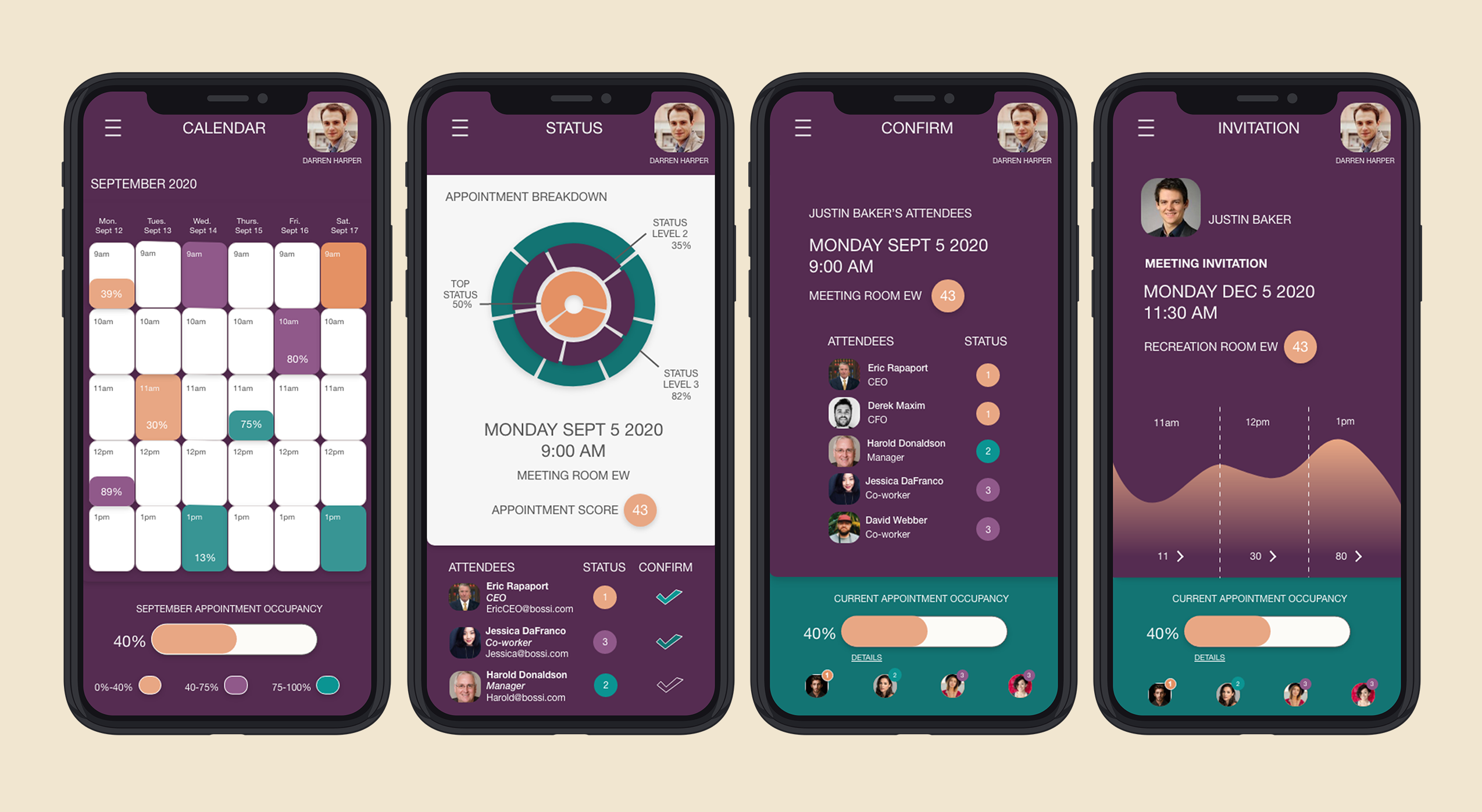
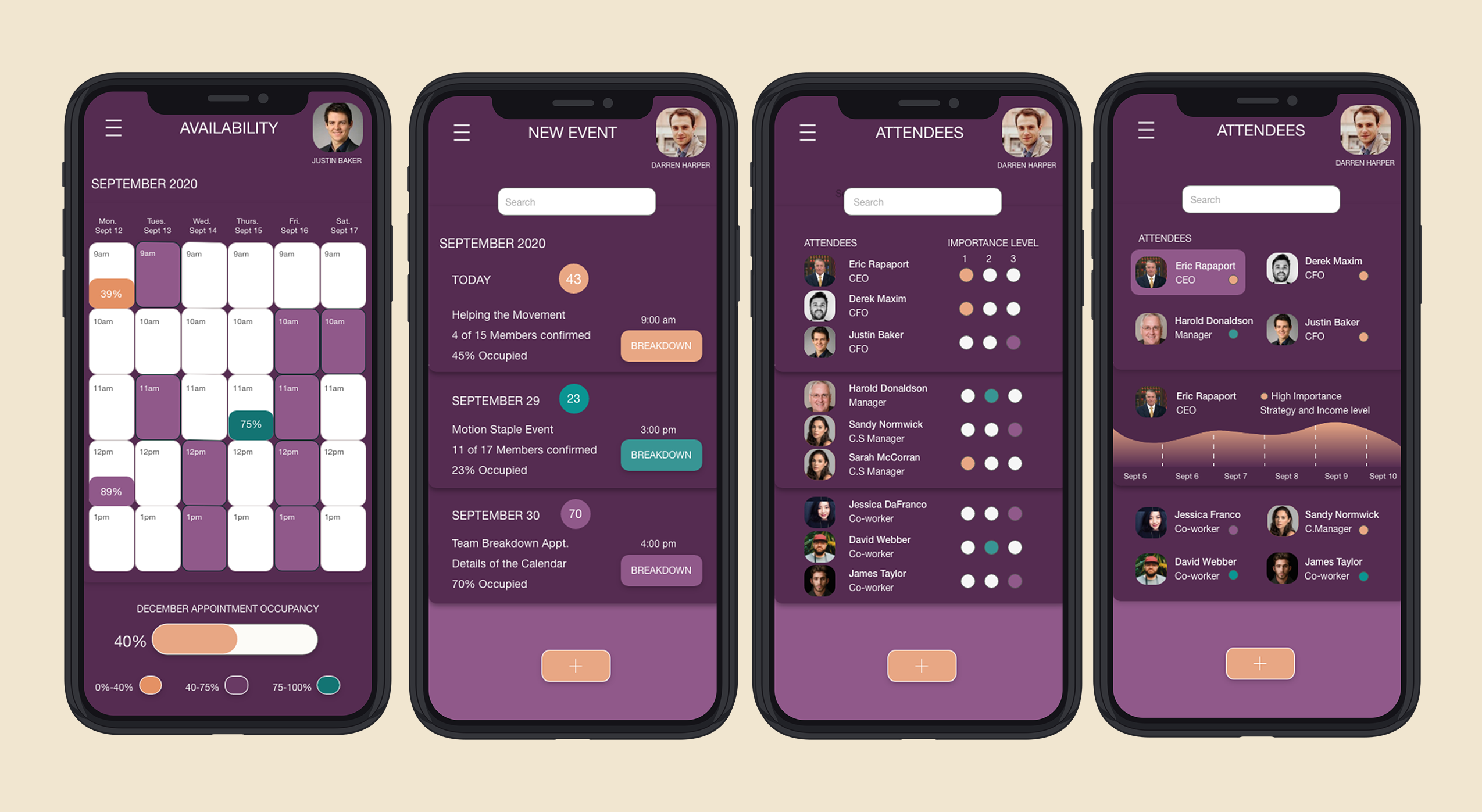
Previous Project
‹Next Project
›